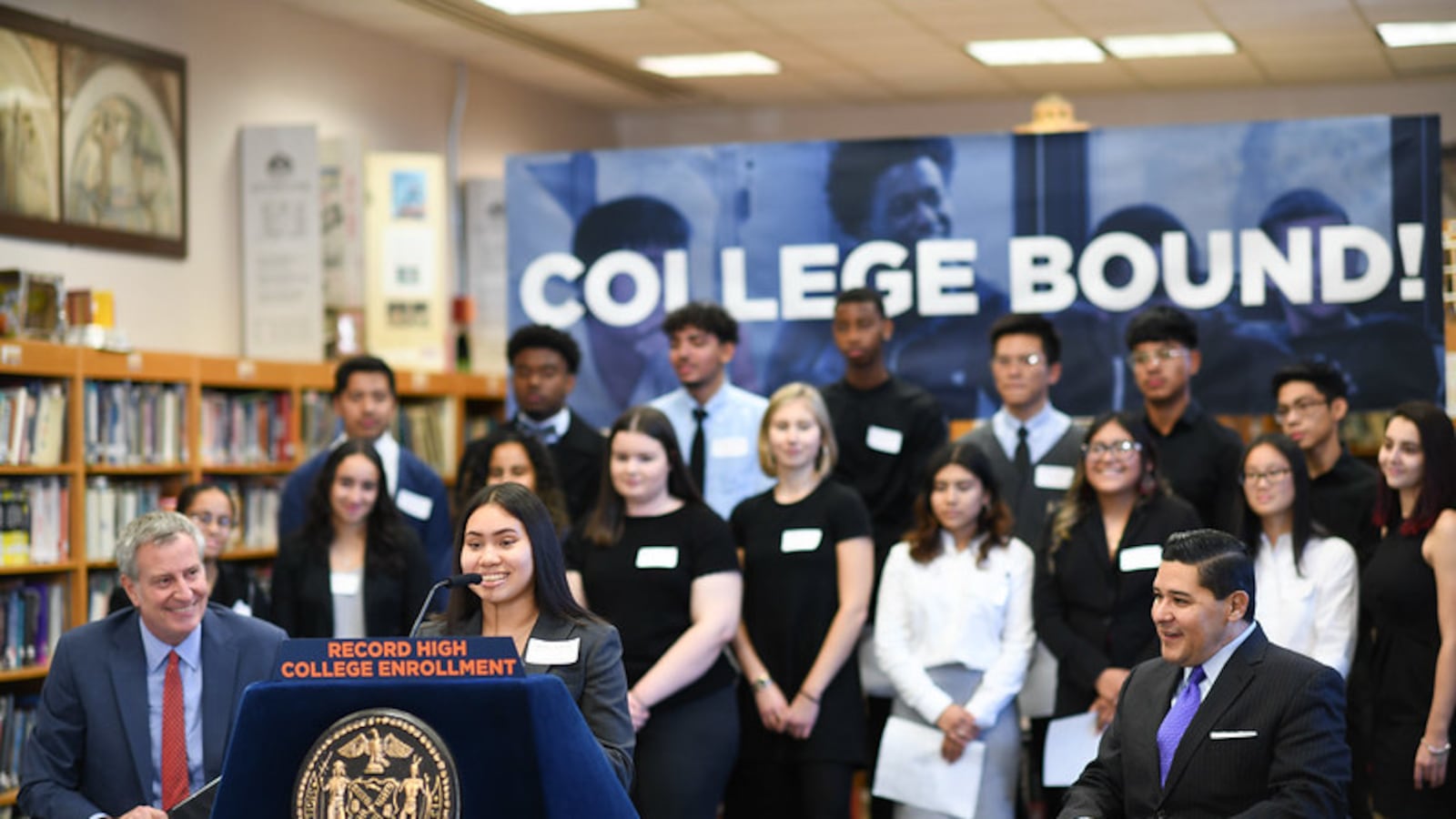Marking a new record high, 62% of students in the class of 2018 have enrolled in higher education programs, city officials said Thursday.
Nearly 49,000 students who started high school in the fall of 2014 have enrolled in two- or four-year colleges, vocational programs, or public service programs, such as the military or AmeriCorps. That’s 3 percentage points higher than the year prior, according to the education department — continuing a steady uptick over the past several years.
Flanked by college-bound graduating seniors at the High School of Telecommunication Arts and Technology in Brooklyn, New York City’s schools Chancellor Richard Carranza told reporters the system was “moving our students forward in a way that historically has not happened.”
“We are making sure our students know college isn’t just for a select few and that zip code no longer determines who gets to go,” said Mayor Bill de Blasio in a statement.
The city did not specify what enrollment rates look like among different racial and socioeconomic groups. And historically, gaps have existed: A 2017 Research Alliance report found that while enrollment has increased for all city students, large gaps remained between students of different races.
In addition, the city said Thursday that 55% of students in the class of 2019 were deemed college-ready, which rose from 51% in 2018. The City University of New York sets college-readiness standards, looking at on-time graduation and if students are meeting the English and math benchmarks that determine whether they’d have to take remedial classes. Those standards changed in 2017, including the removal of a requirement that students take advanced math in high school.
Those changes accounted for most of the rise in college readiness between 2018 and 2019, while 1 percentage point is linked to “student achievement,” according to the city’s education department.
James Kemple, executive director of NYU’s Research Alliance for New York City Schools, said experts are still trying to land on a good definition of college readiness. For him, important factors include a student’s experience outside of academics, such as access to financial aid.
“I think students’ failure to succeed in college is not just because they don’t know basic math and English skills,” Kemple said.
Education officials have also attributed rising college enrollment to programs established during de Blasio’s tenure as mayor, such as College Access For All, which boosts resources dedicated to college awareness. For example, some schools have used College Access For All funds to help pay for dedicated college counselors, which research suggests can help increase the number of students who apply to college and stay there. Carranza also touted students’ ability to take the SAT for free during the school day — in 2018, 80% of juniors did so.
Kemple said he hasn’t seen any reliable evidence that these initiatives are directly boosting enrollment rates. The “biggest” influence on college enrollment, he said, is the city’s rising graduation rate. The city’s latest graduation rate of 76% is the highest on record and is related to the growing number of students who are choosing to take alternative assessments to earn diplomas. That rate is also linked to an expanded appeals process that made it easier for students to graduate despite earning a low score on a high school exit exam.
“In fact what you’re seeing is that the college enrollment rates have kept pace with an increase in high school graduation rates,” Kemple said. “So kids are graduating from high school and moving on to college. That’s a national trend that’s been particularly true in New York City, and I think that’s kind of the first order of connection in the pipeline.”
Kemple also said it’s important to understand how college enrollment varies among different racial and socioeconomic groups. The 2017 Research Alliance report found the percentages of New York City students enrolling in four-year colleges, who started high school in 2008, widely differed among racial groups. Of Asian students, 54% enrolled, compared to 41% of white students, close to 23% of black students, and just under 19% of Hispanic students.

